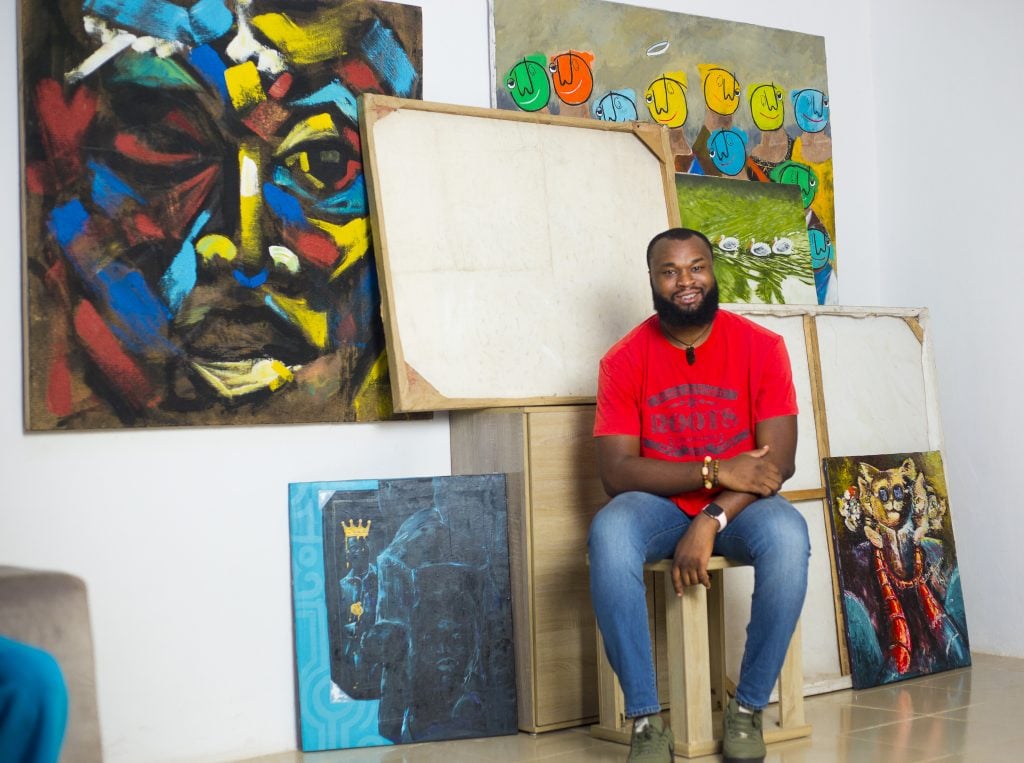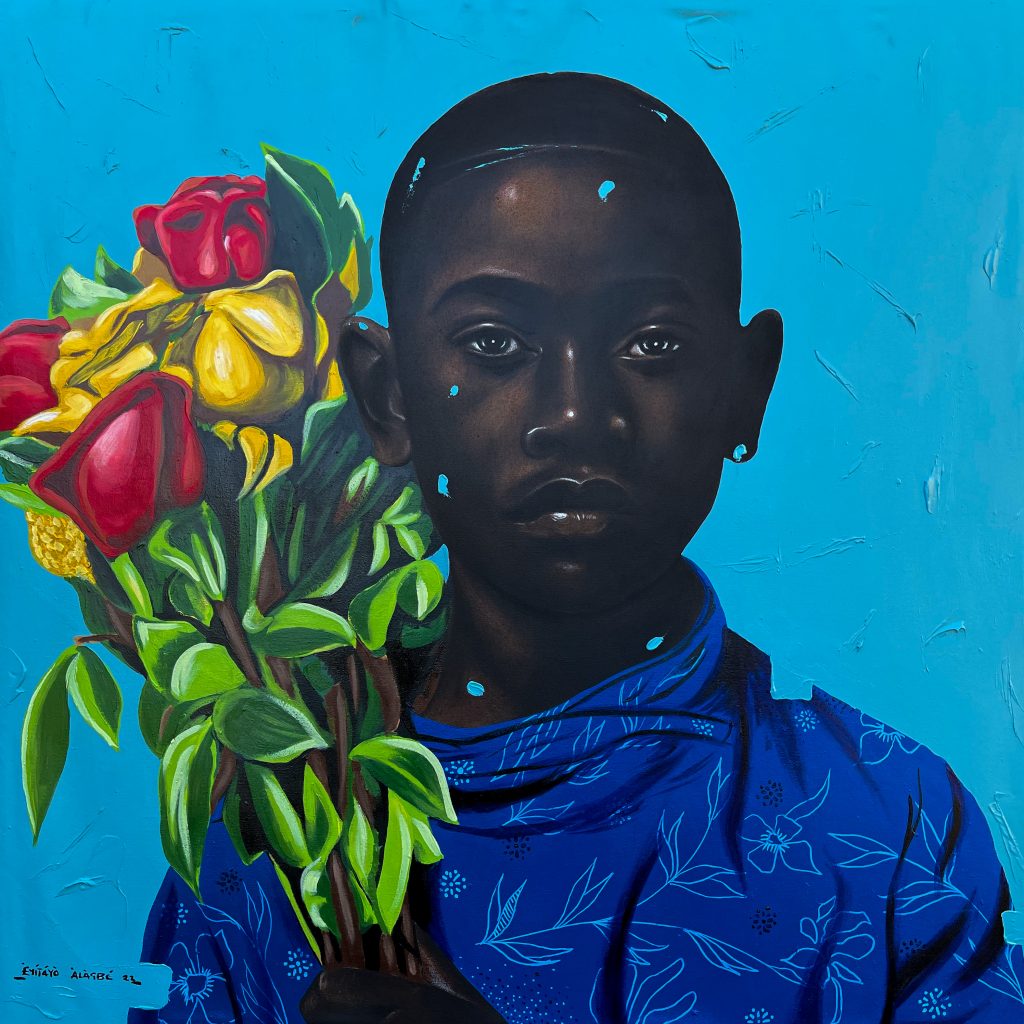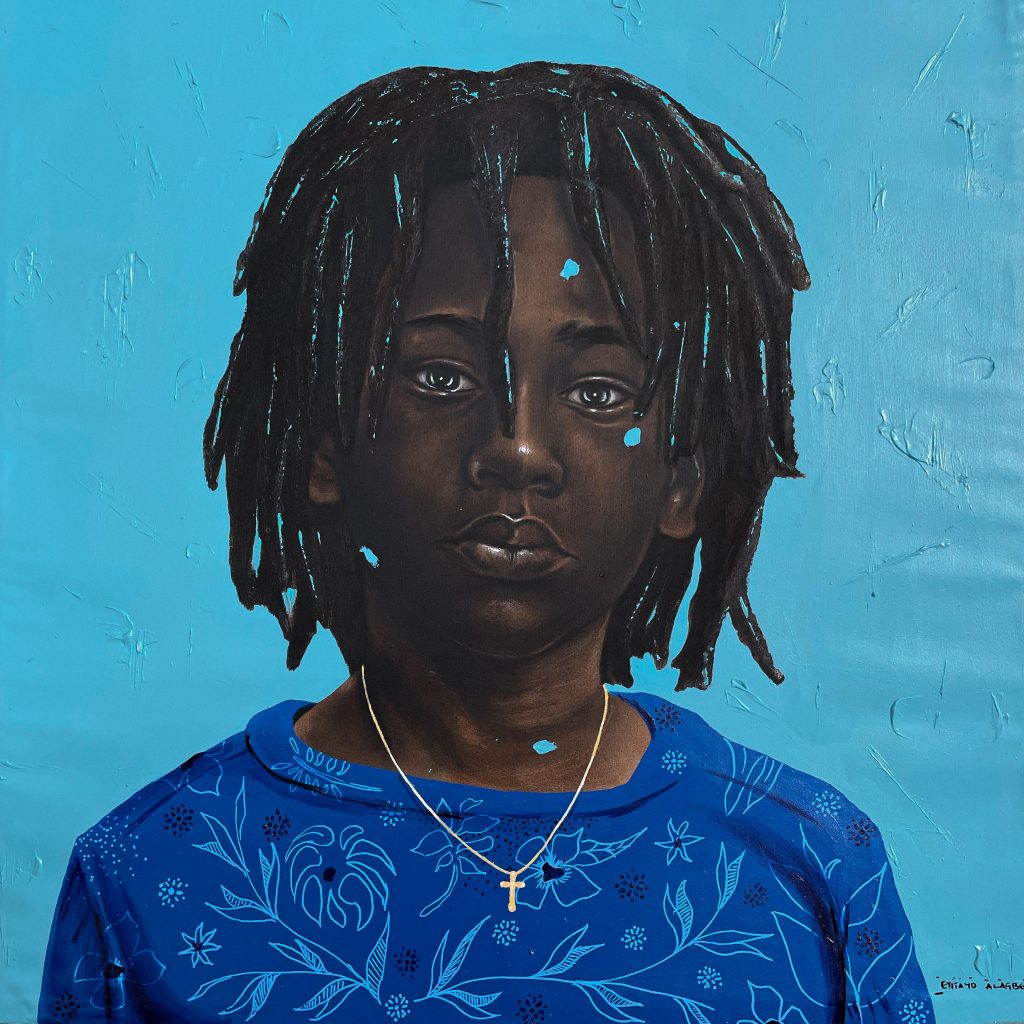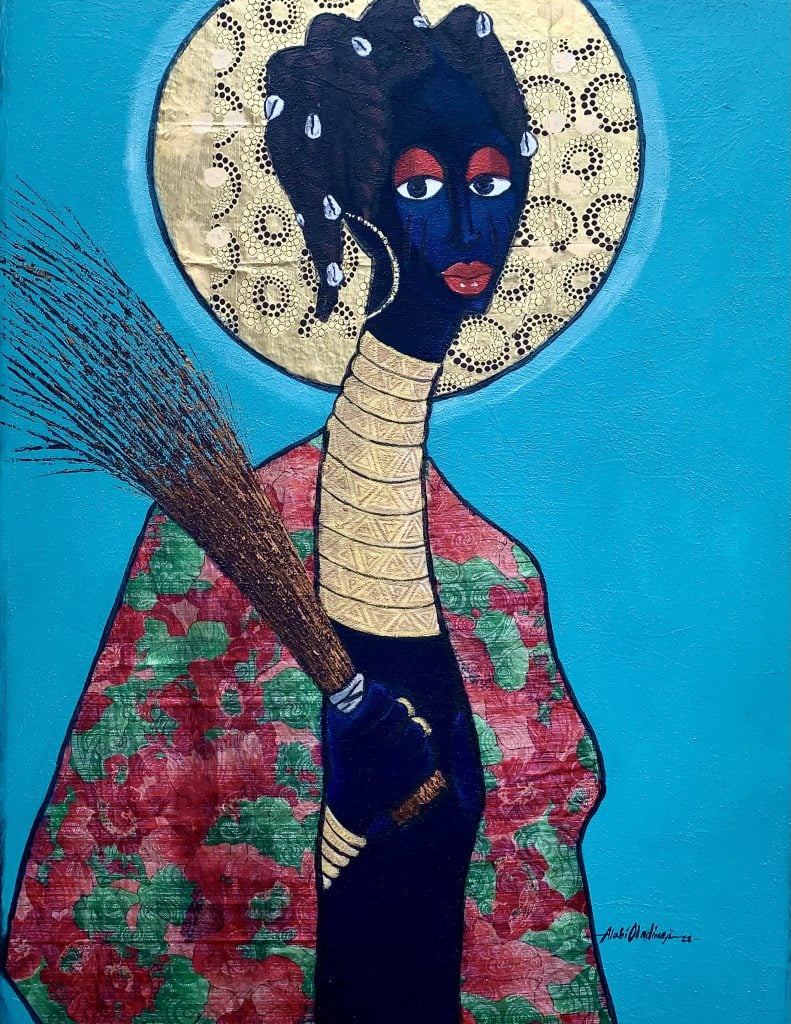Based in Ibadan, Nigeria, Constance and Sons Gallery has made a name for itself as a platform to foster and promote African art and artists – and has become a growing presence to watch in the international art world. Founded by Dunmade Ayegbayo in 2020, the primarily online gallery has established a dynamic program of exhibitions that showcase both its inimitable roster of artists as well as the nuanced and multifaceted traditions of African artistic creation. Carefully selected and selected by Ayegbayo, the artists represented reflect the spirit of skill, talent and quality that the Constance and Sons gallery has sought since its opening.
Recently, we reached out to Ayegbayo to find out more about the impetus behind founding the gallery and what collectors should know about the burgeoning Nigerian art scene.

Dunmade Ayegbayo. Courtesy of Constance and Sons Gallery, Ibadan.
Can you tell us a bit about your background and what first inspired you to open the Constance and Sons gallery?
I am a passionate advocate for African art and a visionary entrepreneur. Born in Osun State, Nigeria, I was raised in an environment steeped in artistic expression, which sparked my interest in fine art and the unique perspectives that artists bring to the world through their job. I was influenced and inspired by the late chef Caleb Adegoke (a sculptor and my grandfather).
I had my supernatural inspiration to create Constance and Sons Gallery because of my desire to make a lasting impact on the African art scene and empower emerging artists. I believe the gallery serves as a platform to foster the growth and expand the reach of contemporary and emerging African artists, specifically focusing on harnessing the power of e-commerce to connect artists to wider audiences.
In addition to being a gallery owner, you are also an artist yourself. Does it influence or influence the way you run the gallery?
Yes, it helps me understand certain events from the artist’s point of view, meanwhile, I found my voice in art and business after joining Victor Art and Enterprises, a renowned arts organization, thanks which I was able to embark on this professional career. combining my love for art with my art and artist management skills.

Eyitayo Alagbé, believe 1 (2022). Courtesy of Constance and Sons Gallery, Ibadan.
According to you, what is the main mission or objective of Constance and Sons Gallery? Has it evolved or changed since its inception?
The gallery’s mission has always been the same: to identify, cultivate and exhibit works of art on a meritocratic basis. In a world where talent is often overlooked, the gallery positions itself as a champion of fairness and equality. By evaluating artistic excellence, originality and cultural significance, the gallery ensures that the artists it represents truly deserve the recognition they receive.
Although many other factors motivate me to focus much more on rewarding artists for their work; I have often found that African artists are not well compensated in their relationships with certain galleries.
How would you describe the type of art and artists the gallery represents?
The gallery represents artists based in Africa. I believe there is an originality attached to black art, which cannot be found elsewhere.
You know that black art and black artists have unique qualities and characteristics that set them apart in the wider art world. These include a cultural identity that reflects and celebrates Black history and experiences – and that tends to explore themes of African heritage, diaspora, social justice, and the African-American experience or afrocentric. Spiritual and ancestral ties that reflect the belief in the interdependence of past, present and future generations are also present, as are issues of preservation and cultural heritage. All this is found in African art.

Eyitayo Alagbé, believe 2 (2022). Courtesy of Constance and Sons Gallery, Ibadan.
The gallery is currently presenting the exhibition “What happened to African fashion: Tunde Bakarehighlighted on his profile. Can you tell us a bit about the show?
Tunde Bakare is an experimental artist who uses his craft as a way to preserve a true cultural heritage of fashion. This exhibition preaches African fashion and its evolution over time.
Let me say that the exhibition is a reflection on the cultural significance of African fashion and its role in shaping individual and collective identities. It also challenges preconceptions and stereotypes by highlighting the richness, complexity and global relevance of African fashion. By celebrating the diversity and creativity of the fashion industry in Africa, the exhibition pays homage to the cultural heritage and innovation that continue to shape the continent’s fashion landscape.
Take for example the Yoruba people, one of the largest ethnic groups in Nigeria, who have a long and rich history of sartorial expression. Traditional Yoruba attire is renowned for its exquisite craftsmanship, bold patterns, vibrant colors and attention to detail. The “What Happened to Africa Fashion” exhibition offers a captivating insight into the best Yoruba dress style, highlighting its importance within Yoruba culture and its impact on the wider African fashion landscape.
What do you think collectors entering the Nigerian art scene for the first time should know?
Rare and special! The collector must understand that from the history of the fine arts, the African artisanal mode of creation is rich and cultural.
Nigeria has a rich and diverse artistic heritage with a long history of artistic traditions and cultural expressions. Collectors should familiarize themselves with the various art forms, styles and cultural contexts that have shaped Nigerian art over the years.
Nigeria is also home to many renowned and established artists who have gained national and international recognition encompassing a wide range of artistic practices including painting, sculpture, textiles, ceramics, photography, performance art, etc. . Collectors should explore and appreciate the various mediums and techniques employed by Nigerian artists.

Oladimeji Alabi, Symbol of Memories 2 (2022). Courtesy of Constance and Sons Gallery, Ibadan.
What’s on the horizon for the gallery? Is there any news from the gallery or an upcoming exhibition that you can tell us about?
There is an ongoing exhibition on Artnet, “Mixed memorywhich is a captivating and thought-provoking artistic showcase that explores the rich cultural heritage, lifestyle and experiences of Black Africans.
I will invite the viewer to focus on the figurines painted on the faces of the muse and to capture the distinctive physical traits that define the various ethnic groups of Africa. From the elongated necks and ornate hairstyles of the Ndebele people to the scarification patterns of the Yoruba tribe, these artistic depictions highlight the uniqueness and individuality of African women. The intricacy of the figurines showcases the attention to detail and craftsmanship that characterize African sculptural traditions.
Learn more about the Constance et fils gallery here.
Follow Artnet News on Facebook:
Want to stay one step ahead of the art world? Subscribe to our newsletter to receive breaking news, revealing interviews and incisive reviews that move the conversation forward.
